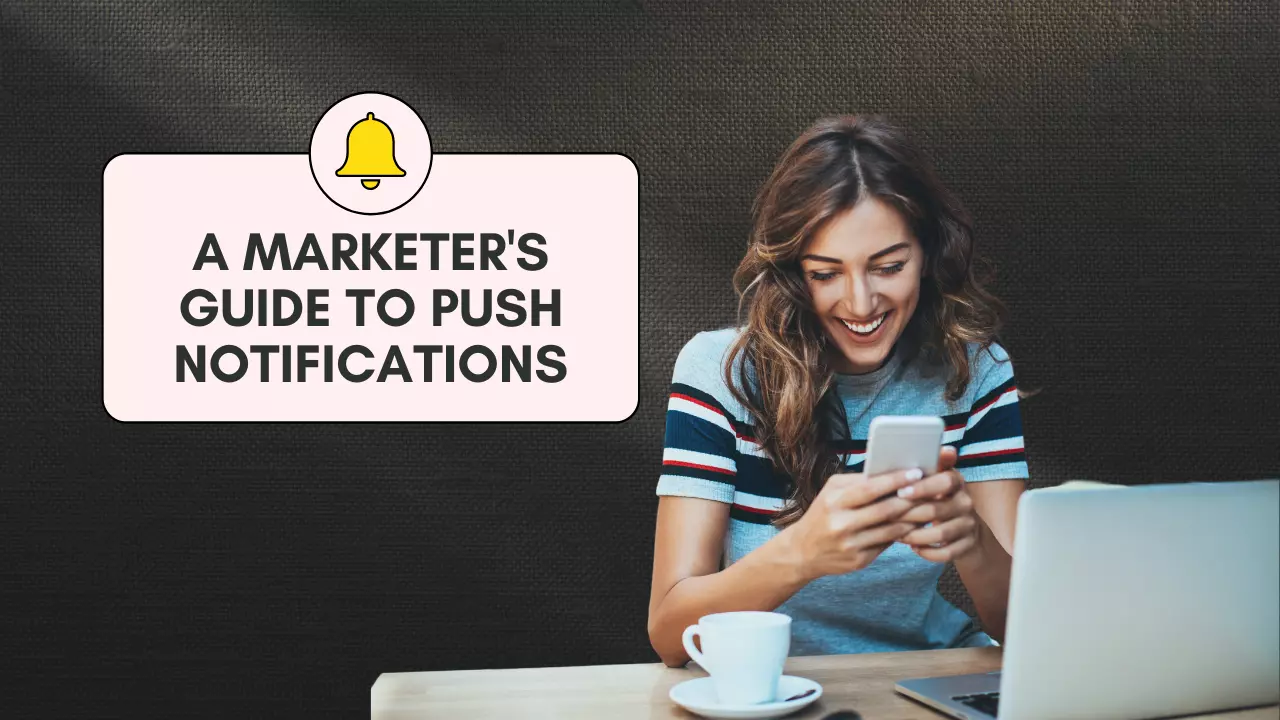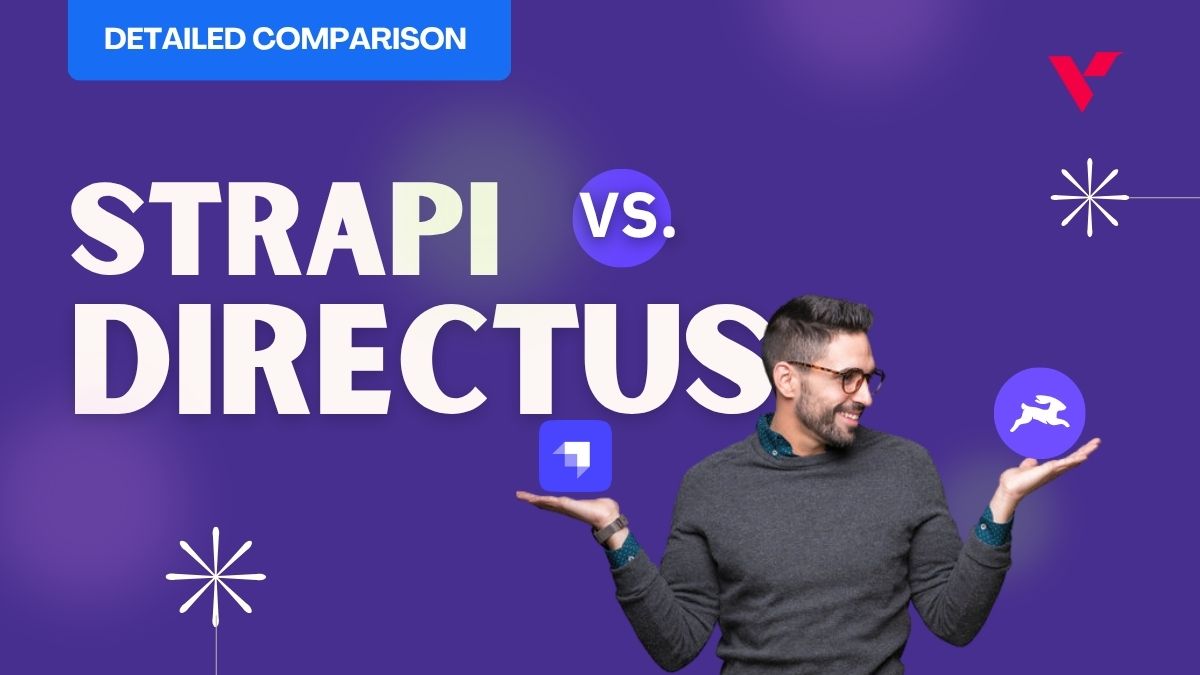When seen from the point of view of today’s internet users, push notifications are often annoying and disruptive. However, from a marketer’s point of view, push notifications can be the perfect channel to communicate with customers and gather leads.
So, is it really wise to keep using them when over 52% of the recipients declare they’re irritated by them?
In today’s guide, we’ll have a look at what push notifications are, how they work, and why marketers love to use them.
Table of Contents
What Are Push Notifications?
In technical terms, push notifications are small pop-up messages that show up on your phone or browser. They can include titles, messages, images, URLs, logos, emojis, and more. The overall design and look of push notifications vary depending on the operating system and browser, but they’re always easy to see.
On mobile devices, push notifications are sent through a mobile app and show on users’ mobile devices regardless of the fact that the app is open or not. For browser notifications (or web push notifications), a website can send these messages even when users are not actively using the site. As long as they have a working internet connection, the notification will show up on their desktop screen.
In fact, marketing specialists think that browser push notifications are the next big thing in marketing this year because these short messages help engage visitors and keep the connection with the brand alive.
Modern web apps (like Gmail, Facebook, Google Docs, and others) also have the possibility to implement push notifications. This is possible due to the PWA concept, which allows a series of functionalities such as offline access and push notifications for desktop and mobile. The great news is that anyone with a bit of tech knowledge can learn how to implement web app chat notifications using Firebase.
How Do Push Notifications Work?
The main purpose of push notifications is to keep users up-to-date with events that may be of immediate interest, such as flash sales or travel deals. They’re quite simple and easy to manage, and you can include text, emojis, and even CTAs and clickable links.
However, it’s important to keep in mind that push notifications do not perform the same across all browsers and operating systems. For example, some emojis are not available to Android users who don’t regularly update their phones. Also, users can opt out of receiving these notifications, so avoid overusing this channel.
How to Use Push Notifications
Push notifications are great for connecting with customers on a more personal level, but you need to craft different ones for different scenarios (if you don’t want your users to opt out).
Here are a few ideas:
1. Recover from an Abandoned Cart
According to a recent study, the cart abandonment rate in 2022 was just under 70%. This means that about 70% of shoppers abandon their cart before finally hitting that sweet Purchase button.
When this happens, you have a very small window to act before they go to the competition. For this, you can create and set automated notifications that will encourage customers to complete their purchases. Send out friendly messages like “Did you forget something?” or ”Your cart is waiting, don’t forget about it!”.
The secret is to keep it simple and short. Also, make sure your notifications don’t become annoying.
2. Increase your Conversion Rate
Whenever you run a discount campaign or have secret rewards for users who have your app on their phone, you can use push notifications to let the target audience know. In this case, you can add CTAs and clickable links to make it as easy as possible for users to reach your offers.
Push notifications can also be a great way to notify customers about new merchandise, such as custom gifts or company merch. By sending out targeted push notifications to customers who have shown interest in a specific type of product, you can increase the likelihood of making a sale. For example, if a customer has previously purchased a custom t-shirt from your website, you can send them a push notification about a new line of custom hats that you’re offering.
3. Boost your Local Campaigns
By leveraging location data and behavioral data, marketers can provide more relevant messages to their target audience. For example, users can receive offers for cooling units during a hot spell, invitations to VIP trunk sales at nearby specialty boutiques, or local promotions for special discounts and sales.
4. Stay in Touch
Sometimes there’s nothing newsworthy about sending out push notifications, but you still want to be present in your audience’s life.
In this case, you can send news alerts based on their preferences and the profile you’ve built using existing data. For instance, travel agencies can send alerts related to travel limitations, weather warnings, fun things to do in X destination, and so on.
5. Create a Sense of Urgency
Time-bound push notifications (like sending out discount coupons available only for the following two hours) are an effective way to create urgency and motivate users to take advantage of a specific offer. Just make sure to set a notification expiry so users don’t click through to find an expired deal.
How to Create Effective Push Notifications
Push notifications can be a powerful tool for marketers to drive traffic, leads, and sales. However, creating effective push notifications can be challenging, and requires careful planning and execution. In this section, we’ll outline six key steps for creating effective push notifications.
1. Defining your target audience
The first step in creating effective push notifications is to define your target audience. This includes understanding their demographics, interests, and behaviors. By understanding your audience, you can create notifications that are relevant and engaging to them. For example, if you’re targeting young professionals who are interested in fitness, you might create a push notification that promotes a new workout app.
2. Crafting compelling headlines
The headline of your push notification is the first thing that your audience will see, and it’s critical to grab their attention. Your headline should be short, catchy, and clearly communicate the value of your notification. For example, instead of writing “New product release,” you could write “Get ready for our game-changing product launch!”
3. Writing concise and clear copy
Your push notification should be short and to the point, with a clear and concise copy. Avoid using jargon or complex language, and focus on communicating the key message of your notification. For example, if you’re promoting a sale, you might write “Don’t miss out on our biggest sale of the year – 50% off everything!”
4. Using images and videos effectively
Images and videos can be a powerful way to grab your audience’s attention and communicate your message. When using visuals in your push notifications, make sure they are high-quality and relevant to your message. For example, if you’re promoting a new product, you might include an image of the product in the notification.
5. Incorporating personalized messages
Personalization can be a powerful way to increase engagement with your push notifications. By using data about your audience, such as their name or location, you can create notifications that feel more personal and relevant. For example, you might send a notification that says “Hey John, we noticed you’re near our store – come in for a special offer!”
6. Timing and frequency of notifications
Timing and frequency are critical factors in the success of your push notifications. You want to send notifications at a time when your audience is most likely to be engaged and avoid sending too many notifications that could lead to them becoming annoyed or unsubscribing. For example, if you’re promoting a new blog post, you might send a notification in the morning when your audience is likely to be checking their phone.
Creating effective push notifications is one of the top digital marketing trends of recent times and requires careful planning and execution. By defining your target audience, crafting compelling headlines, writing concise and clear copy, using visuals effectively, incorporating personalized messages, and timing your notifications appropriately, you can create push notifications that engage and convert your audience.
According to research, push notifications can increase app engagement by up to 88%, and drive up to 10 times more app launches. By following these best practices, you can take advantage of the power of push notifications to drive traffic, leads, and sales for your business.
Push Notification FAQs
Push notifications can be a powerful tool for marketers to reach their target audience, but it’s important to use them correctly to avoid turning off potential customers. Here are answers to some common questions about push notifications:
What are the best practices for the timing and frequency of push notifications?
Timing and frequency are crucial factors to consider when sending push notifications. You don’t want to send too many notifications and risk annoying your audience, but you also don’t want to send too few and risk being forgotten. One best practice is to only send notifications when there is relevant and valuable information to share. Also, be mindful of your audience’s time zone and schedule your notifications accordingly. According to a survey by Leanplum, the best time to send push notifications is between 10 am and 1 pm.
How can I personalize my push notifications?
Personalization is a key element to effective push notifications. By using information about your audience’s preferences and behavior, you can send notifications that are more relevant and likely to be acted upon. One way to personalize notifications is to use the recipient’s first name or location. You can also use their past purchases or browsing history to suggest products or services that might interest them. According to a survey by SmarterHQ, 72% of consumers will only engage with personalized messaging.
What are the common mistakes to avoid when sending push notifications?
One common mistake is sending irrelevant or spammy notifications. This can lead to users opting out of receiving notifications altogether. Another mistake is not segmenting your audience properly. Sending the same notification to everyone on your list regardless of their interests or behavior can also lead to low engagement rates. A study by Accengage found that the opt-in rate for push notifications increased by 42% when users were given the option to choose the type of notifications they receive.
How do I measure the success of my push notification campaigns?
To measure the success of your push notification campaigns, you should track metrics such as open rates, click-through rates, and conversions. This data can help you understand which notifications are resonating with your audience and which ones are not. You can also use A/B testing to test different versions of notifications to see which ones perform better. According to a survey by Localytics, push notifications have a 50% higher open rate than email marketing.
What are some effective strategies for incorporating push notifications into my overall marketing plan?
Integrating push notifications with your other marketing efforts can help you create a more cohesive and effective strategy. For example, you can use push notifications to promote sales or new products that you’re advertising on your website or social media. You can also use push notifications to drive traffic to your website or app. According to a survey by Xtify, sending a push notification can increase app engagement by 88%.
Push notifications can be an effective tool for marketers to engage with their audience and drive traffic, leads, and sales. However, it’s important to use them correctly by following best practices, personalizing them, avoiding common mistakes, and measuring their success. By integrating push notifications into your overall marketing plan, you can create a more comprehensive and successful strategy.
Wrap Up
When used sparingly and well-designed, push notifications are a great marketing tool. Moreover, push notifications that are personalized to fit the occasion are effective and won’t go away anytime soon.




















